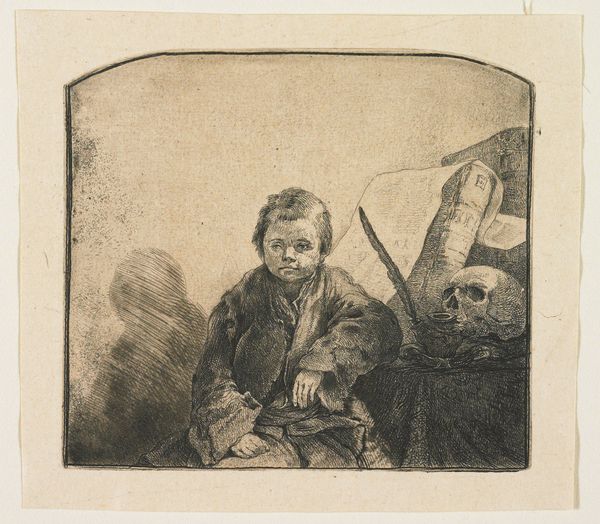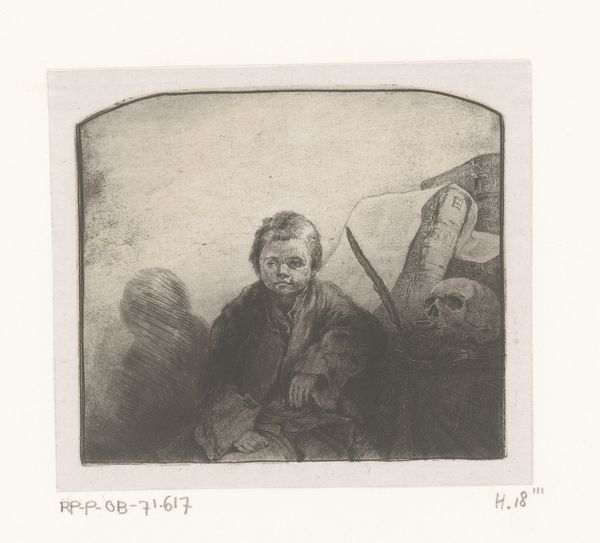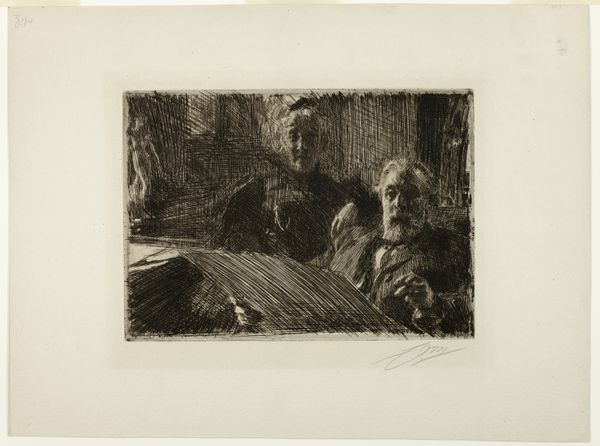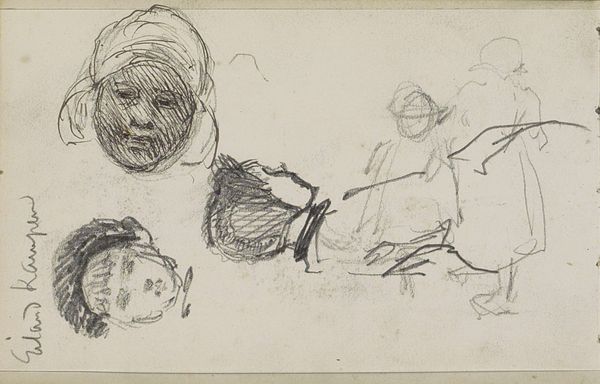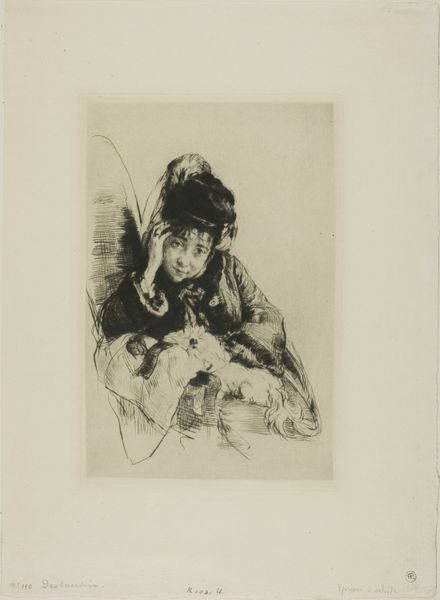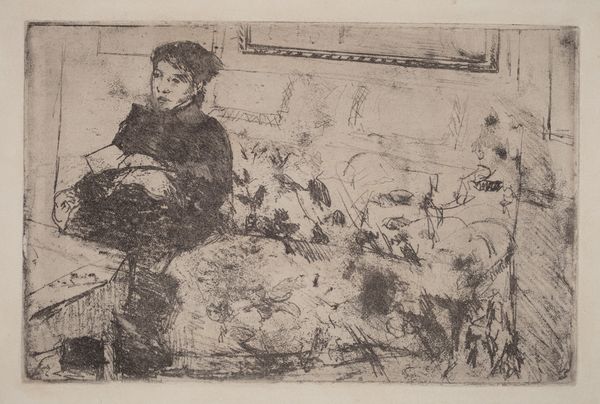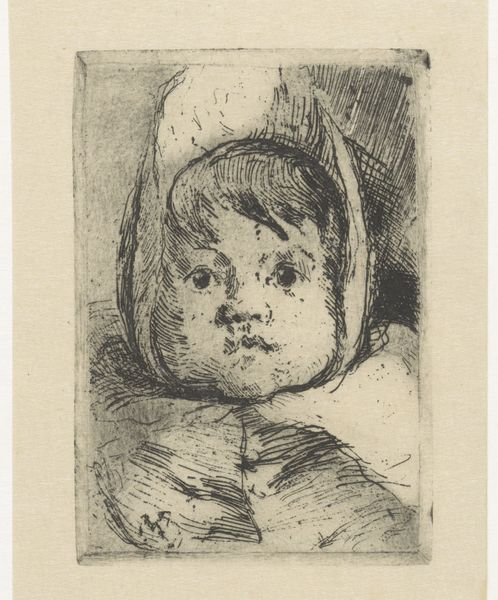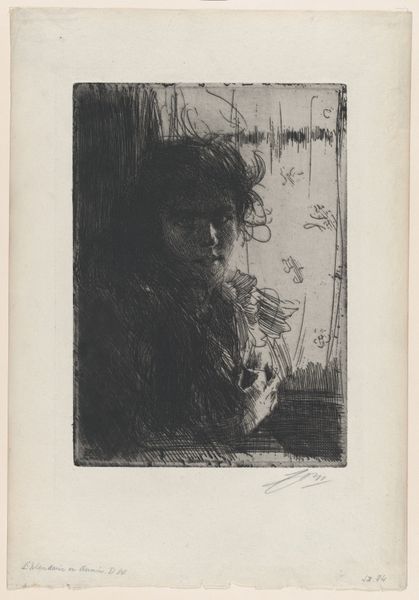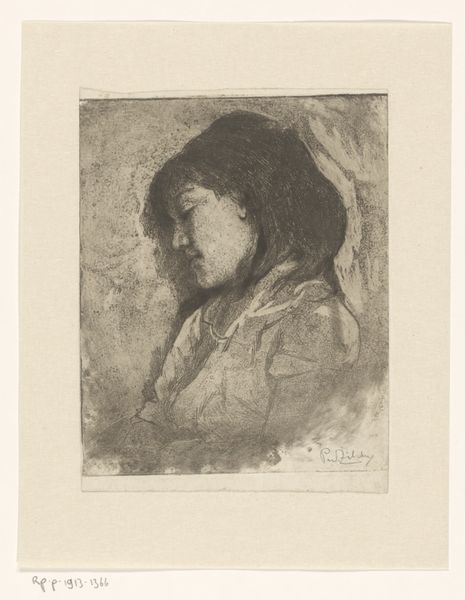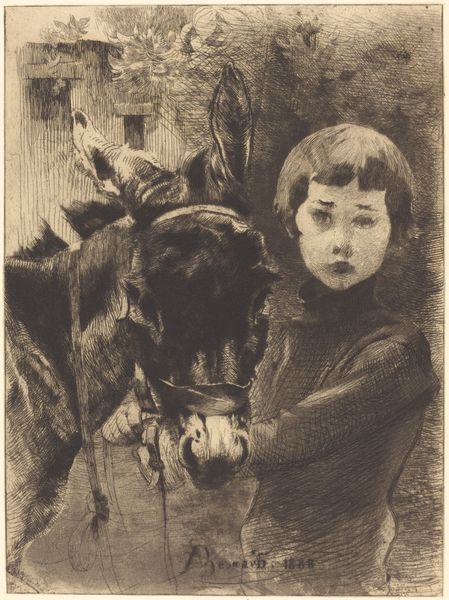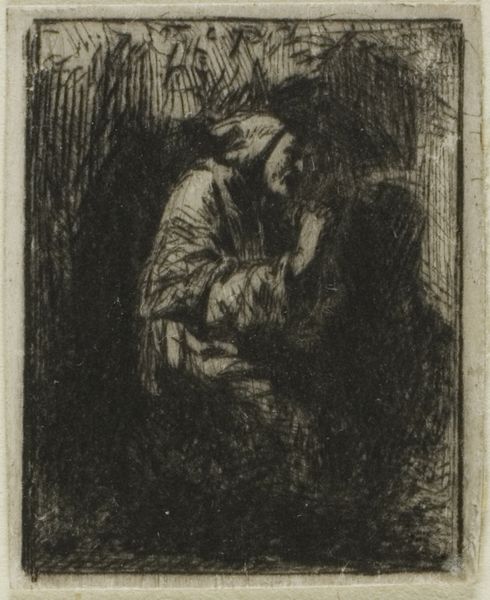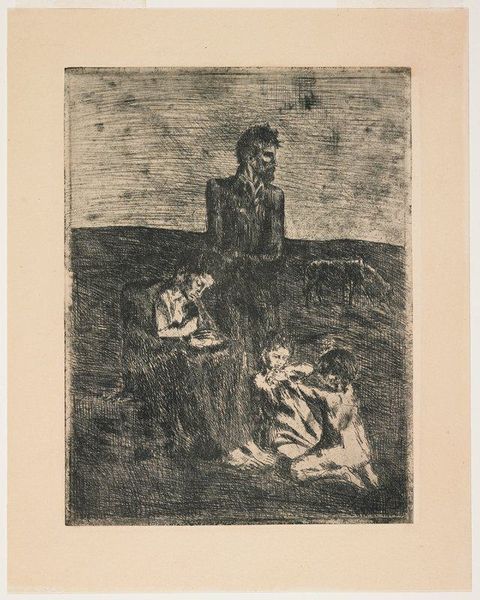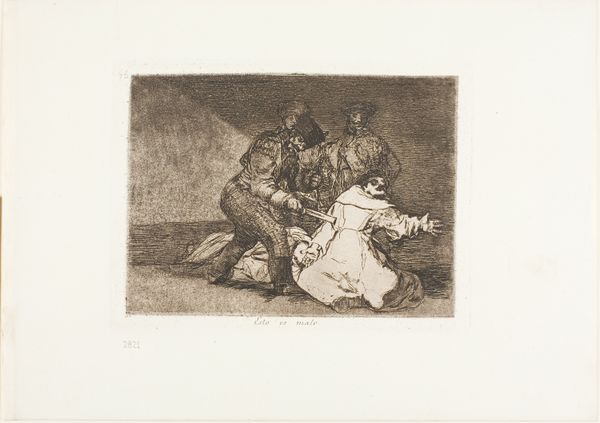
Dimensions: 78 × 89 mm (plate); 95 × 108 mm (sheet)
Copyright: Public Domain
Editor: This is "The Little Philosopher," a 1778 etching by Jean-Pierre Norblin de la Gourdaine, housed at the Art Institute of Chicago. It’s surprisingly melancholic. I mean, a child next to a skull? It feels…heavy. What am I missing here? How do you interpret this work? Curator: Ah, yes, a weighty piece indeed. The "little philosopher," isn't he something? Norblin, with his etching needle, captured a very specific moment. Look at the *memento mori* symbols – the skull, the crumbling scroll, the darkness creeping around the edges – these aren't just decorative props, darling. They're a blunt whisper: Remember you must die. The child’s supposed wisdom is almost satirical – burdened with concepts no child should understand, don’t you think? He is the very portrait of innocence staring down the barrel of mortality. It’s terribly… poignant. Don’t you feel the dissonance? Editor: Definitely! The contrast is jarring. This boy's supposed to be a "philosopher," grappling with big ideas, but he's still just a kid. That shadow in the back…is that significant, too? Curator: The shadow...hmm. Perhaps the specter of futures never realized, of wisdom eternally just beyond grasp. Maybe Norblin asks if philosophy robs us of childish wonder? It makes me consider what burdens society imposes upon children, eh? Editor: I hadn’t considered that interpretation before, about lost wonder. This wasn’t what I expected when I looked at it initially. I assumed it was a history painting or a straightforward portrait! Curator: Expectations are boring, aren't they? Good art always has another question to whisper. Always a fresh bloom ready to unravel. Editor: So true. Thanks for your insights! I definitely see so much more here now. Curator: Anytime, darling. Keep looking, keep questioning – it’s a philosopher's game, really, isn’t it?
Comments
No comments
Be the first to comment and join the conversation on the ultimate creative platform.
